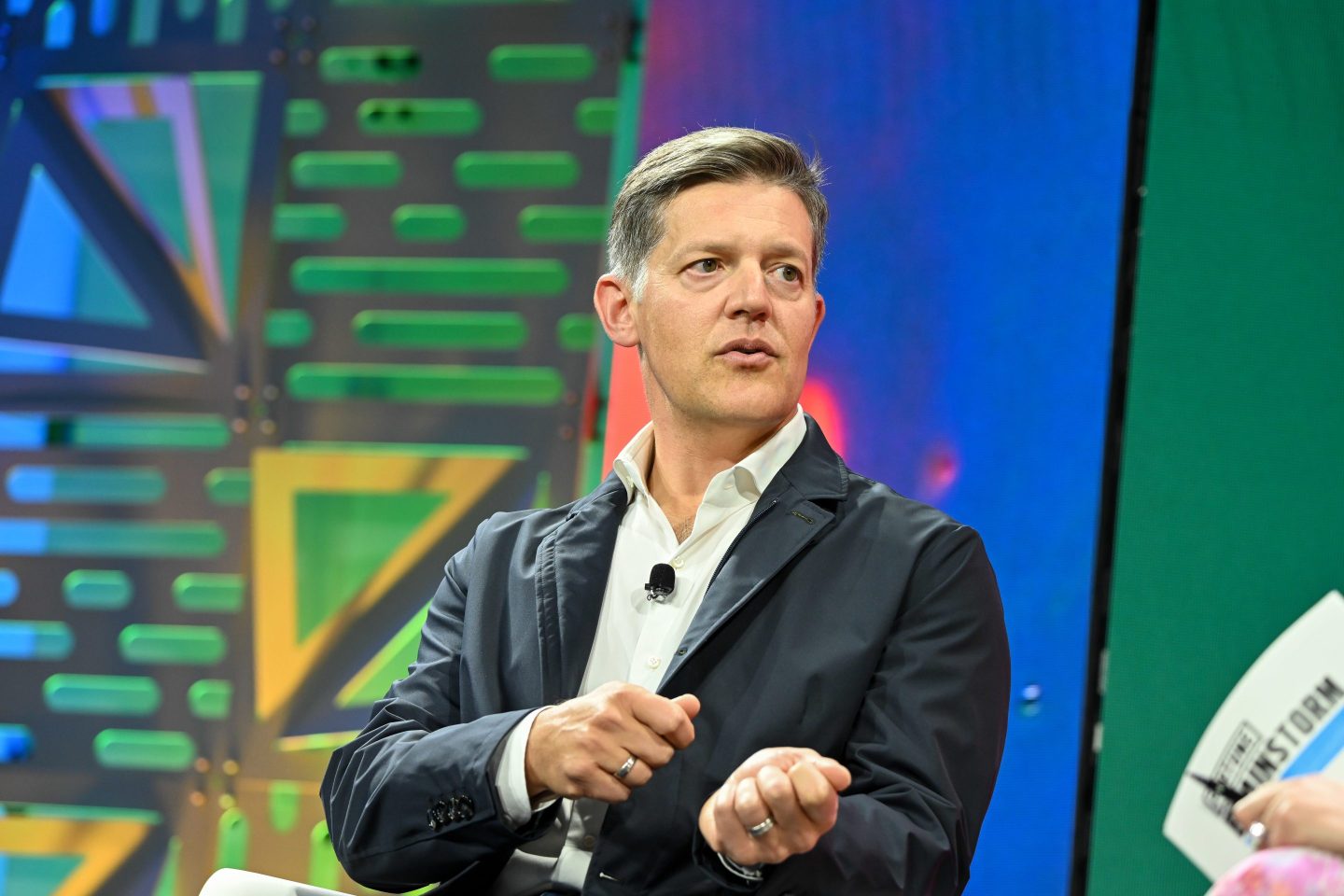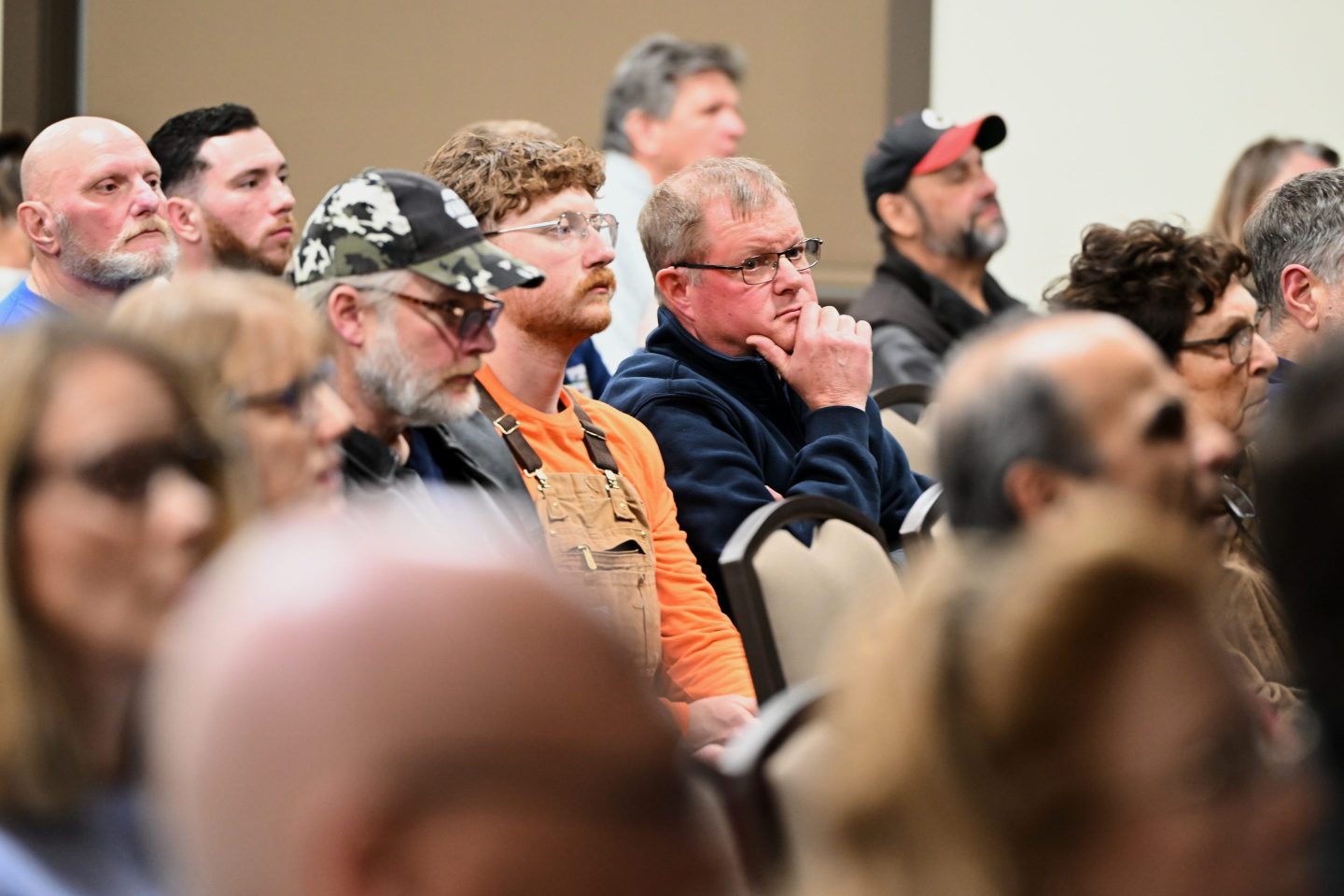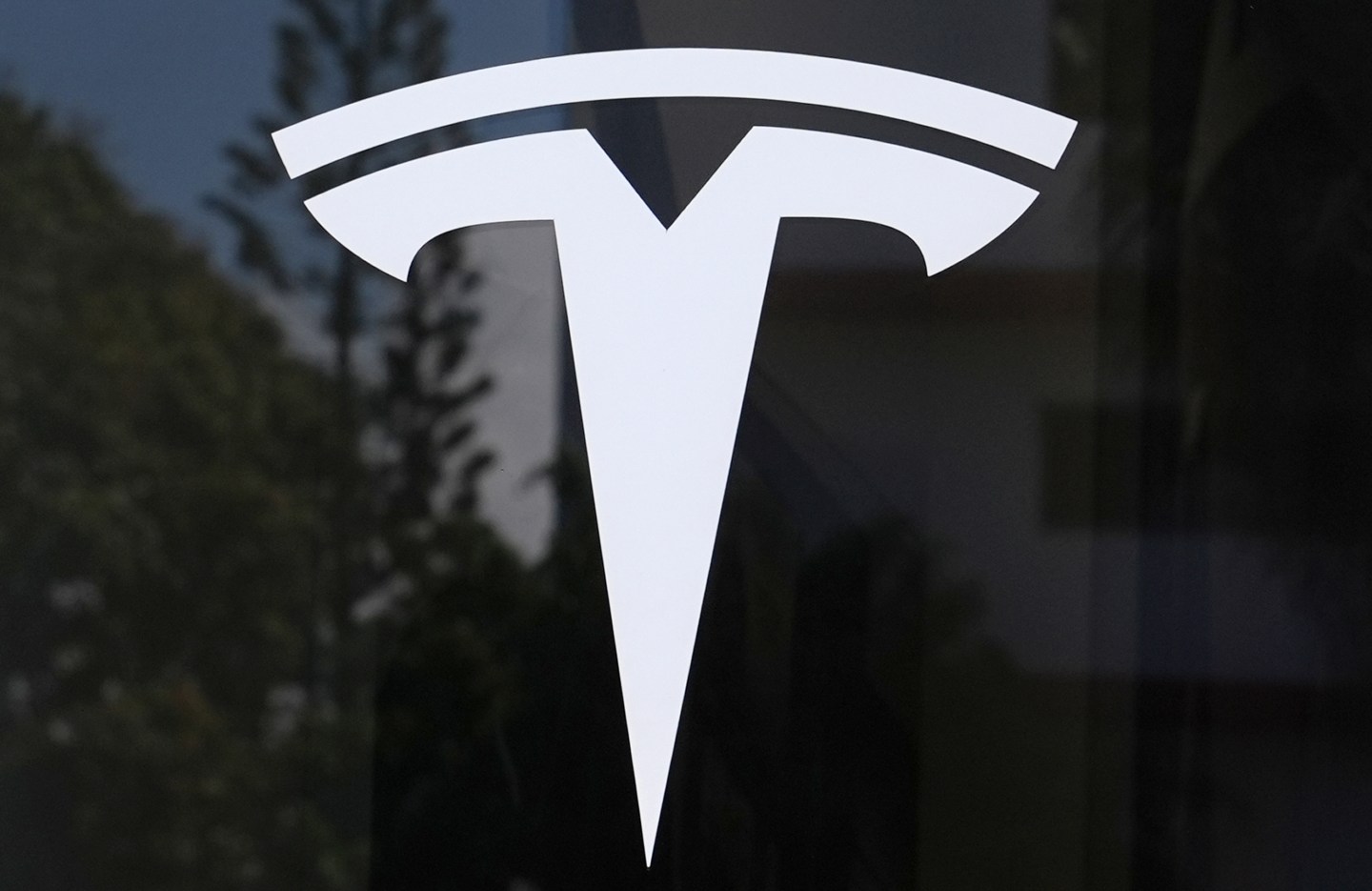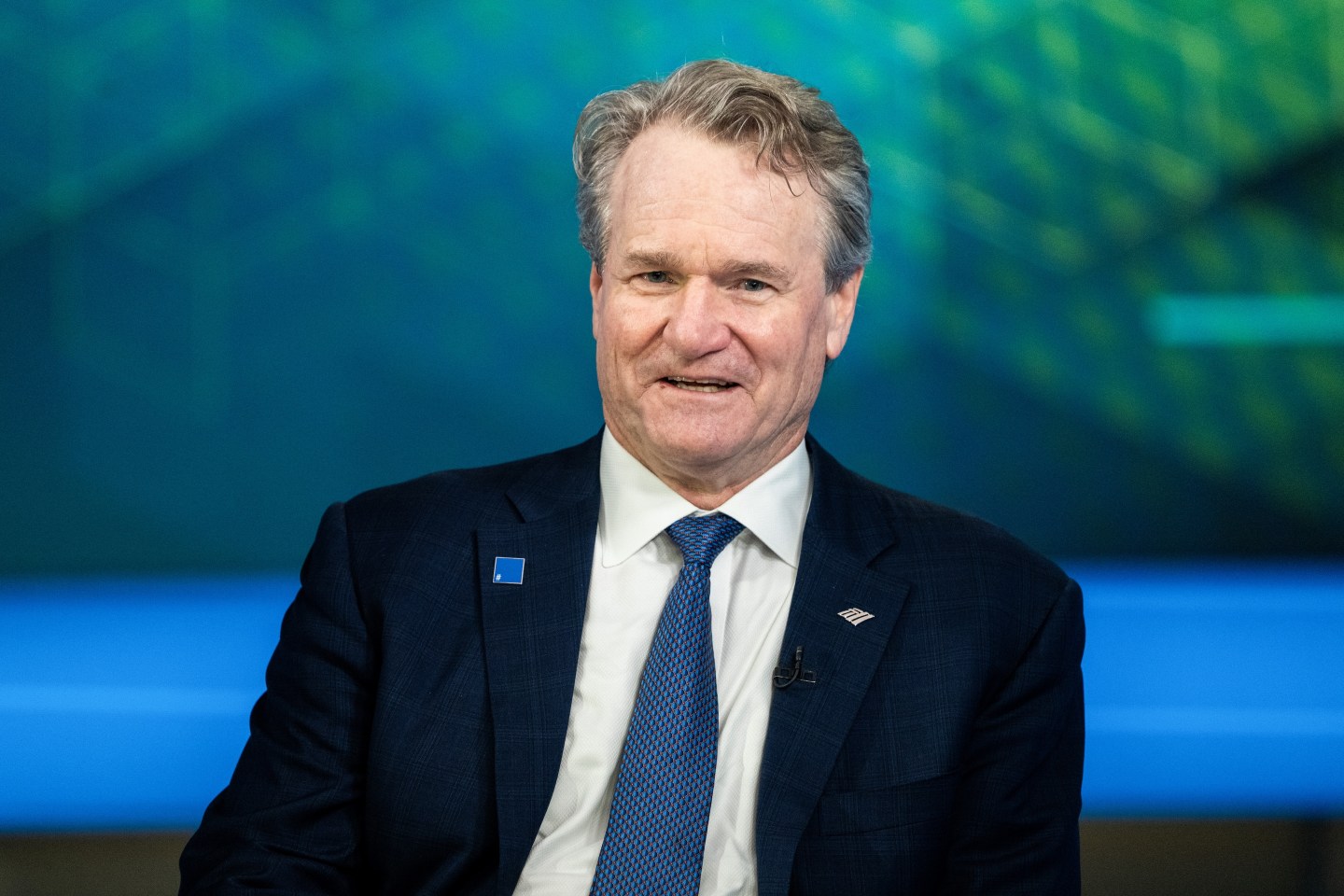Mid-game on the rugby field in South Africa, teenage Roelof Botha felt the ringing crack of a fist.
An opposing player had decisively socked him—maybe more than once—but decades later, it’s not the punch he remembers. It is, instead, the teammate who sprung to his aid. The two didn’t know each other well, but they were bound together.
“He came to my rescue, to try to defend me,” said Botha. “It was a memorable moment of realizing that, even though we don’t have a normal relationship because we have a class together or something—playing rugby, we have a bond that’s very powerful.”
Since 2022, Botha has been managing partner of Sequoia Capital, taking the helm at a rocky time in venture capital, where major exits are few and far between. Botha has been tasked with keeping the storied firm out of the mud and scoring tries in the in-goal area (for the Americans out there, rugby’s equivalent of the end zone).
Botha was profiled by my colleague Michal Lev-Ram this summer, but he recently checked in with Fortune because so much has changed across the political and investing landscape since then (And in the short-time since this latest interview, which took place on February 19, the landscape has changed even more in the whirlwind Trump administration). Read on for Botha’s views on the state of venture capital, what makes great investors, teams, politics, and, yes, Elon Musk.
This interview has been edited for length and clarity.
Q: From where you sit, what’s changed in the last six months?
Well, there’s a renewed sense of optimism. The stock market has obviously had a good run over the last six months, and that has a knock-on effect in private markets. It’s determined economics that prices are sticky downwards, but they’re very quick to snap up. An equivalent of that happens in our business. When public markets go down, private companies hope they can stick to yesterday’s valuation multiples, not today—but as soon as the multiples go up, they want today’s multiples. A sort of one-way door. So, the exuberance, the renewed strength of the public market has a ripple effect back into late-stage private investing.
I think we’ve clearly seen that if you look at historical multiples, right now we’re at about the 85th percentile of historical valuation multiple levels. So, roughly, you have to go back to the peaks of 2022, 2008, and 1999 to be at a higher relative valuation multiple level than we are right now.
The question is: Are earnings going to grow that quickly in ’25, ’26, that those valuation multiples come down, or might there be a correction? What’s going to happen with interest rates as it affects share prices?
All of these dynamics are at play. In venture capital, you’ve had this bifurcation where it looked like an easy business. There were so many people who flooded into the industry in ’21-’22, and the reality is it’s very hard. One of my partners has this phrase, that it’s “a return-free risk”—you are actually better off just buying treasuries or buying an index fund than investing in the quote- unquote average venture firm.
The best continue to have a very strong brand, continue to get the best deal flow, continue to make good investments. Then, there are a bunch of other people for whom it’s almost a part-time endeavor. There’s a lot of overhang in the industry, a lot of unspent capital commitments, but many people are starting to pull back. A lot of first-time or second-time funds are having a hard time closing.
I think you’re seeing the middle segment of venture capital start to retract. There’s still a vibrant set of seed investors because having a $30 million or $50 million fund isn’t that hard. Enough rich people will fund their friends or people who made their money working with big companies. Then, you have the very big firms, some of whom seem to be becoming asset managers with the goal of generating fee income and assets under management.
So, I’d say that’s how the industry is shaping up. And then, there’s us.
Q: Where does Sequoia fit in this paradigm?
We’re in a league of one. We play a different game. We’ve created the Sequoia Capital Fund where we are able to be long-term shareholders of winners for much longer. And this fund structure enables us to fuel our underlying funds without the need to raise more money.
And, by the way, we have been a net source of liquidity for our LPs for the last 20 years. Most other firms keep on growing their asset base, and they keep on sucking more money out of the system, because they need it to fuel their ongoing investments. The returns aren’t good enough for them to be able to distribute more than their investment.
We’re in the opposite situation. We have distributed far more than we’ve pulled from our LPs, and I don’t think anybody else is in that situation—certainly not at our scale. Maybe a small firm.
Q: If you had to distill it down, how has that happened?
There’s a numbers piece to it and a culture piece. In the numbers piece, we have an objective function, which is to generate the highest net multiple funds. That’s our goal. I can’t—if you ask me, “What are our assets under management?”—I’d have to come back to you in a few minutes, because I have to go look it up. It’s not a number that floats at the top of mind. It doesn’t matter to us. What matters is: Are we driving exceptional returns?
We were one of the first firms to build a dedicated growth business to understand that, yes, you could be a very good venture investor, but there’s an opportunity to continue to invest in companies as they scale and stay private longer. We were one of the first to pioneer that back in 2004-2005. We did this vertical integration and had always made seed investments, but then we split our seed fund out. We have a dedicated seed fund, venture fund, growth fund, and a late-stage fund for companies that really scale—like Stripe, Airbnb, and SpaceX—where we continue to invest much later.
The reason I mention this is that each of these separate vehicles is to create focus and discipline. You have to be excellent at seed investing, excellent at venture investing, and excellent at growth investing. It’s very dangerous with a large pool of capital to just say, “Oh, this doesn’t matter. Oh, is it a $5 million investment? Let’s just invest $10 million,” because there’s no discipline. If you have a mega-fund, you don’t get that discipline of “no, no.” This happened to us last week. We were competing for an investment. The founder wanted to raise $12 million. They got a term sheet for $15 million. We were thinking about investing $12 million, but weren’t sure the company was ready to take that much capital. They needed to answer important strategic questions about their roadmap.
We ended up negotiating a $6 million investment, and they accepted because they wanted us as their business partner. We did that because we were thinking from a venture fund point of view. We only have 35 important opportunities to invest in our venture fund, and how do we maximize the best return on every dollar?
There’s a numbers piece around a performance mindset, which is important. What really matters is culture and team. If you were to sit in on one of our off-sites, and we still have our competitive advantages, there’s a visual around it, and it talks about the value of our brand and technology—the center of this, the keystone that holds it all together, is culture. It started with Don calling it Sequoia Capital, not Valentine Ventures, which you could have. That was the norm in those days, professional firms with the names of the people in the door—law firms, accounting firms, venture firms. He didn’t.
When he called it Sequoia Capital, when he recruited other people like Mike Moritz and Doug Leone, it wasn’t to work for him, it was to work with him. That created a culture where they inherited the partnership, and he didn’t ask them to buy it out from him. He didn’t come and say, “Listen, you guys owe me. You got a little bit of economics in the next one or two funds as his fair compensation for handing over the reins of this established firm.” He didn’t expect people to buy him out, which sometimes happens. Nor did he hang around and keep itching on the system, which sometimes happens at venture firms. He was happy to let go, and I met him when he interviewed me before I joined. He was in partner meetings when I joined, and he wasn’t running the partnership anymore, but he was available for advice when asked. He didn’t second-guess and he didn’t undermine. It was incredible for me to see.
Q: I’ve talked to Alfred Lin previously about the importance of holding ideas in tension. What role does that concept play at Sequoia? What does it mean to make good decisions?
Part of it is leadership. The framework I have for myself is “authenticity, logic, and empathy” because then people will trust you as a leader. I need to show up and be who I am. People need to trust my decisions. I think if you spoke to people at Sequoia, there’s a sense that we’re very demanding of people’s performance, but they know we’re rooting for them to succeed. It’s not because we’re second-guessing them or trying to chop them off. To do that, you need to build trust.
The same happens with how we have investment conversations on Mondays. You and I need to have an all-out debate about the merits of an investment without feeling it’s a personal attack. If I can’t convince you that this company fundamentally has good gross margins, a strong competitive moat, or a differentiated value proposition, we probably shouldn’t make the investment. If you’re challenging me on that, I shouldn’t get offended. I should embrace it and thank you, because I don’t want to be saddled with a poor investment because you see something I don’t. That comes from us having a team culture, which dovetails with the rugby analogy, where we play as a team. Here, we’re not a collection of individuals with our own P&L, doing our own thing. We’re a team. We make investments together. Our fingerprints are on every decision. We own our success together. We own our failures together.
It also means that it dovetails with company-building, especially when you need help. We had this conversation yesterday in the partner meeting where someone needed help with one of the companies. We spent 15 minutes as an entire team just talking about one company’s key strategic question. It’s our investment, and we want to help this company succeed. We want to help Konstantine [Buhler] in that situation. A lot of this is about trust, and when we have off-sites, we start with check-ins. Have you heard about this?
Q: Not in this context.
The idea of the check-in is to talk about something personal and work-related you’d like to share with the team. There are no recriminations, just a chance to demonstrate vulnerability. One of the best ways to build trust is to show you’re not defensive, you’re vulnerable. In these check-ins, almost every time we do them, someone is crying because a loved one is dying, or they’re dealing with a family illness, or someone has a personal setback, or someone is worried about one of their investments or struggling with work. We have these open conversations. It was uncomfortable when we started, but it builds a lot of trust.
The other part is empowerment. Jim [Goetz] reminded me: In 2010, when Mike [Moritz] and Doug [Leone] asked him and me to run our venture business in the U.S., Jim and I were complaining about things we didn’t like. Then Mike, at that point, said, “Okay, the two of you should run it. And I want you to know, if you don’t like something, go change it. Don’t wait for permission. Just take charge.” I had this conversation recently with our investment team as well: If there’s a little burr under the saddle, do something about it. Don’t complain about it.
Q: That agency sounds like it’s really important to you, that it’s part of pursuing excellence?
When you work with and hire exceptional people, why would you want to micromanage them? Andrew [Reed] has fantastic ideas of his own. I want to give him as much free rein as possible so he can do things where I go: ‘Wow, that was brilliant. I didn’t have that idea.’ And that’s in the spirit of teamwork. If you’re insecure, you’re fearful when other people do interesting things, because it implies you know you weren’t all knowing, but none of us are. And so when you get comfortable with that, you can empower a team, because our goal is shared success. You want to win as a team. It’s not about how good I am, or about Alfred [Lin] or Andrew or Pat [Grady] or any other individual. It’s about how we win as a team.
In rugby, you care about the score. One of the things that really surprised me about American sports—in a basketball game, they praise athletes for the number of rebounds or points in the game, even if the team loses. I thought ‘all that matters is if he wins.’ In rugby, no one cares who scores the drives. It’s the team’s success that matters. That’s the kind of ethos we have as players. What is our shared success? So, you empower people.
Q: I’m curious: How do you know when someone has the potential to be an exceptional investor, or has become one?
One of the most difficult things in our business is to gauge the success of an investor. And just because you were successful once doesn’t mean you’ll continue to be successful, which really messes with your mind a little bit…
Q: It also takes so long to know if you’re good. I don’t envy the timeline on what you all do.
It’s very hard psychologically. Jim [Goetz] had this expression: “The lemons drop first.” You’re three or four years into the job, maybe with one or two promising companies, but they’re a long way from being IPOs or successful positions. The two or three that aren’t going to work likely already appear that way. It makes your self-confidence struggle. We talk about this as the Valley of Despair. It lasts between three and six years, it varies by individual. All of us have to walk through that valley, and we recognize that in our teammates. We need to let someone struggle on their own. If you coddle too much, they won’t learn how to do it themselves. But you also don’t let people go completely off the rails or lose confidence to the extent that they stop being effective. That takes a long time and judgment to develop.
Our businesses, in statistical terminology, are non-stationary because the sectors we invest in keep changing. You could have been a great semiconductor or networking investor in the 1990s and completely ineffective in Web 2.0. You could have been great in Web 2.0 and missed mobile and cloud. Are you keeping up with the latest in machine learning and AI? Are you up to date with developments in cybersecurity? In our business, you have to keep a beginner mindset. You must be willing to learn about new industries and sectors. Even if you’ve been successful, you can start to coast, drop down a year or two, and then your career is over.
Q: The next natural question, perhaps: What is the state of exits?
There was a theme in 2021 and 2022 that everything worked, that it was easy. There were young investors who joined in 2019 or 2020 because the feedback loop they had was that everything they saw should have been invested in. Three to six months later, that company raised another round at a high price, and then again. Some of those companies went public—many subsequently lost a lot of their value—but that’s part of why the business looked easy. That’s why a flood of people entered, and the amount of money in venture capital exploded. Everything kept rising with zero interest rates and momentum in the public markets.
The truth is company-building is very hard, and the number of successful companies is limited. The talking points in the industry in 2021 and 2022 were, “Oh, there are going to be many more unicorns and decacorns than ever before.” It’s not true. The analysis we ran three months ago showed that for the last 20 years, not the number of companies valued at a billion privately, but the number of actual billion-dollar exits—IPOs or acquisitions—has remained constant at roughly 20 a year.
Q: So, as the industry has gotten bigger, that number has stayed the same?
It has basically stayed the same. For some companies that succeed, the scale of their success is different from before. I think about YouTube, which was a big outcome at $1.65 billion. PayPal was a big outcome at the time at $1.5 billion. Those aren’t big numbers today in the scheme. Keep in mind, when I was at PayPal, there were 200 million people online, but today, 6 billion have internet access. The numbers have changed. Scale has changed, and companies that succeed become much bigger than they would have a decade or two ago. But the number of companies that achieve breakout success has not materially changed.
Part of the problem in our industry is that talent is more diffuse than it was. People often ask why the PayPal Mafia was so successful. There were two companies recruiting in 2001: Google and PayPal. Those two disproportionately concentrated talent in Silicon Valley. Today, talent is often diffused, but the analysis I just gave you stands: There aren’t that many great ideas that yield very big outcomes.
Q: I’m about to pull a wild pivot here. You mentioned a renewed optimism, and one of the key hopes for the Trump administration was that it would facilitate a better exit environment. How are you feeling about the political landscape? Are you still wedded to the political neutrality you professed a few months ago?
I think about universities. Have you read the Kalven report that came out in Chicago? The Kalven report, from the 1960s, talked about institutional neutrality at universities and how that had to be a cornerstone of how they operated. Two years ago, I think universities lost sight of that. They’ve been losing sight of it for quite a while as they’ve become politicized.
Have you read the David Brooks article about how the Ivy League broke America? Stanford has a real commitment to institutional neutrality. We at Sequoia have a similar mindset—institutional neutrality and allowing individuals to be. In years past, we’ve had Doug as an ardent Republican Trump supporter and Michael as an ardent Democrat. They would get together and talk about investments, and that was great. Their political differences had no bearing on how we operated. That’s the spirit we want to uphold—institutional neutrality while letting individuals be.
Q: Hard as it is to imagine, Elon Musk has become more of a public figure than he already was over the last six months. What’s your sense of the trajectory he’s on? Are you optimistic about DOGE?
I’ve known Elon for over 25 years. He was the first person to offer me a job in America. He believed in me when I was an unknown student at Stanford. I have a lot of appreciation and understanding that he’s not perfect. None of us are. He deeply cares about doing the right thing. You may fault some of his actions. Maybe there are unintended consequences. Maybe he hasn’t considered all the ramifications, but the intent is pure.
We talk about this in our partnership—assume the best intent before judging. You never know what’s in someone’s mind. I have no idea what you’re intending. All I can do is observe your behavior and tell you how it makes me feel. As soon as I ascribe intent, I’ve crossed a threshold and will probably annoy you. It’s better to judge actions and describe their impact.
Because his intent is pure, I’m optimistic about DOGE. Federal employees increased under the Biden administration over four years. I don’t think we had a lean, efficient federal government before that. There’s a lot of waste. I’ve seen it firsthand with our portfolio companies. Regulatory overreach was significant, with agencies acting beyond congressional authority. It’s unclear what their jurisdiction was to do some of what they did. For these reasons, I’m optimistic about the impact it can have on the country.
Q: Consistency sounds like it’s a principle for you. Does that also come from rugby?
It’s a little different. I know what you mean in terms of consistency. Part of how we think about it here is you need to do the reps. You need to show up. This is not a business where, if you think about some of the predators out there, lions can lie around all day, and every second or third day they hunt. The rest of the time, they’re lazing around. Our business isn’t like that. We can’t sit around and wait, then spring into action now and again. We need to apply effort consistently.
We also need the ability to sprint when there’s an urgent opportunity and a short time to make a critical decision. There’s a baseline of effort needed to succeed and an ability to sprint. You need both. A lot of what we talk about here is false dichotomies. Companies say they can either grow or be profitable. The best companies do both. That’s what we strive for—holding opposing ideas in tension and not accepting false dichotomies.













